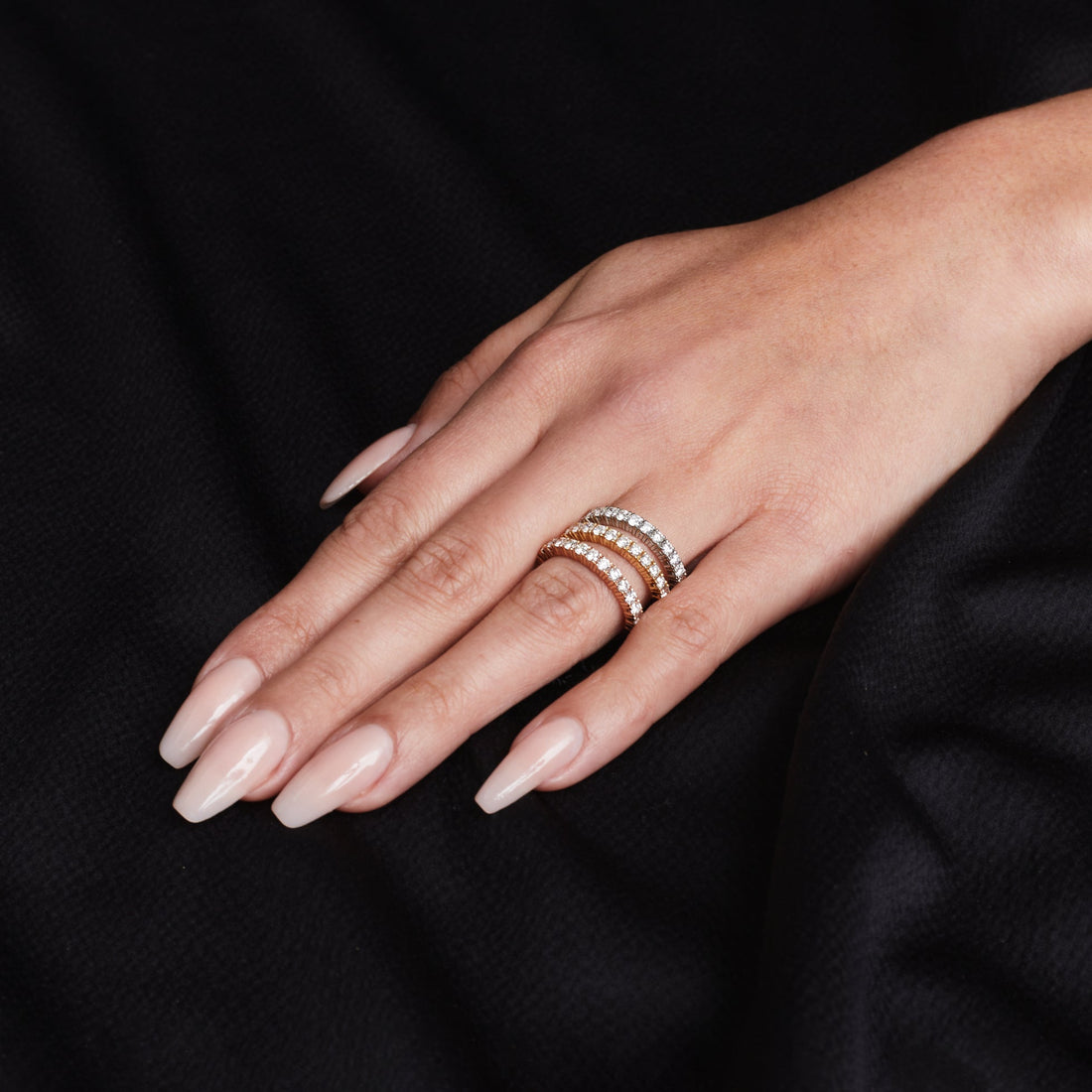Ring Metals Guide

The Philippe Harold Ring Metals Guide: How to Choose the Right Metal for Your Dream Ring
Choosing the perfect ring involves many decisions - from the design to the size, the gemstone to the setting. But one of the most important (and often overlooked) elements is the ring metal. The metal you choose will determine not only the ring’s appearance, but also its durability, comfort, and long-term value.
If you’re wondering which metal is best for your engagement ring or wedding band, you’re not alone. With options like gold, platinum, and silver — each with their own characteristics — it can be hard to know where to begin. That’s why we created this guide: to walk you through the most common ring metals, their pros and cons, and how to pick the right one based on your style, budget, and lifestyle.
Platinum: Timeless, Durable, and Hypoallergenic
Platinum is one of the most prestigious engagement ring metals, known for its natural white hue and incredible strength. It’s dense, heavy, and highly resistant to scratching or tarnishing, making it ideal for everyday wear - especially in men’s wedding rings.
Platinum is also hypoallergenic, making it a top choice for those with sensitive skin. Its colour won’t fade over time, and it enhances the brilliance of diamonds like no other metal. While platinum tends to be more expensive than gold or silver, it’s also extremely long-lasting and can be recycled multiple times, making it a sustainable choice for fine jewellery.
Silver: Affordable Elegance for Everyday Style
Silver is a classic and accessible choice for rings, particularly for those on a budget. As a precious metal, silver offers beautiful shine and versatility. It’s a great option for fashion rings or for those who want to invest in quality without the price tag of gold or platinum.
However, silver is softer than other metals and can tarnish over time. That’s why it's often used in silver engagement rings for casual wear or as part of mixed-metal designs. With proper care, silver jewellery remains a brilliant and elegant choice for years.
Yellow Gold: Warm, Classic, and Full of Charm
Yellow gold has been a favourite for centuries — and for good reason. Its warm, rich colour exudes tradition and romance, making it a top pick for both men’s and women’s wedding rings.
Available in various purities such as 14k and 18k, yellow gold is durable yet easy to resize or repair. It complements vintage designs beautifully and adds a timeless glow to any ring, whether it’s a solitaire diamond or an ornate heirloom piece.
White Gold: Sleek, Modern, and Versatile
White gold offers the shine of platinum with a slightly lower price point. Made by alloying yellow gold with metals like palladium or nickel and finished with a rhodium plating, white gold delivers a sleek, cool-toned appearance that pairs perfectly with diamonds and coloured gemstones.
It's a favourite in modern engagement rings and minimalist men’s bands. However, the rhodium finish may need to be re-applied every few years to maintain its brightness - a small trade-off for its contemporary elegance.
Rose Gold: Romantic, Unique, and On-Trend
For those drawn to something a little different, rose gold is a beautiful alternative. Its blush pink tone adds warmth and character to any design, blending vintage charm with modern flair.
Made by mixing gold with copper, rose gold is durable and eye-catching. It has become especially popular in custom engagement rings and couples’ sets, offering a soft, romantic look that stands out without being too bold.
Which Ring Metal Is Right for You?
Your ideal ring metal depends on your personal style, daily habits, skin sensitivity, and budget. If you're looking for maximum durability, go for platinum. If you want classic elegance, yellow or white gold is ideal. If you're after something warm and romantic, rose gold might be perfect. And if affordability is key, silver is a strong contender.
At Philippe Harold, all of our engagement rings, wedding bands, and custom jewellery are handcrafted in Antwerp using only the finest materials. Whether you’re shopping for a lifelong symbol of love or designing a one-of-a-kind ring, we’re here to help you choose a metal that suits you in every way.
